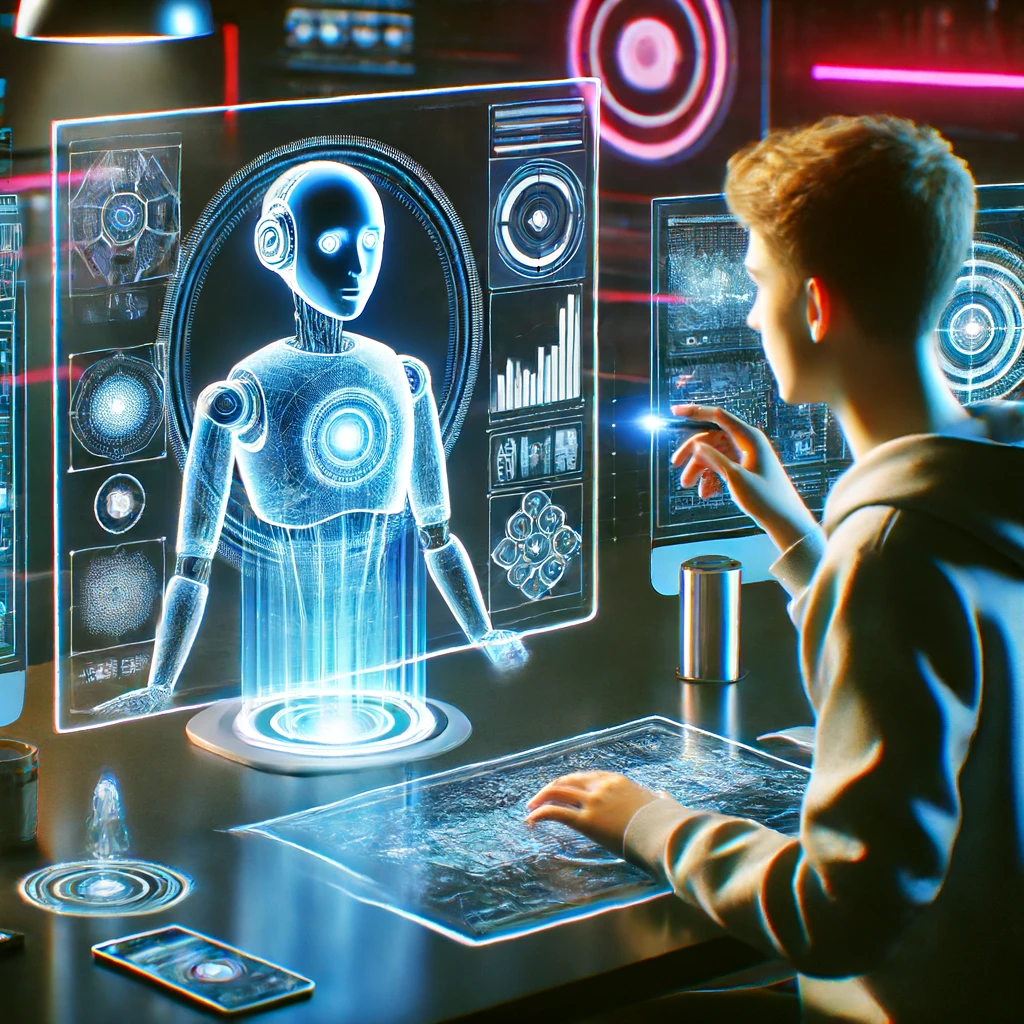LogoGeneratoris.com
Unique AI Logo Generator
AI Generated Logos vs. Human Artists: Collaboration or Competition?
In the ever-evolving landscape of graphic design, the advent of AI-generated logos has sparked a debate: are these technological marvels allies or adversaries to human artists? As artificial intelligence continues to advance, it brings forth both opportunities and challenges in the creative domain. This article explores the dynamics between AI-generated logos and human designers, examining whether they are destined for collaboration or competition. 
The Rise of AI in Graphic Design
AI has revolutionized various industries, and graphic design is no exception. AI-powered tools like LogoGeneratoris.com offer businesses an efficient way to create logos tailored to their needs. These platforms leverage machine learning algorithms to analyze design trends, color schemes, and industry-specific aesthetics, producing logos that are both modern and relevant.
AI's appeal lies in its speed and cost-effectiveness. For startups and small businesses with limited budgets, AI-generated logos provide a quick and affordable alternative to hiring a professional designer. With just a few clicks, users can generate multiple logo options, iterate on designs, and arrive at a polished final product without the need for extensive design knowledge.
The Artistic Touch: Human Designers
Despite the advantages of AI, human designers possess qualities that machines cannot replicate. Creativity, intuition, and the ability to understand nuanced client requirements set human artists apart. A professional designer can capture the essence of a brand, infusing it with personality and emotion that resonates with the target audience.
Human designers bring a depth of experience and a personal touch to their work. They can interpret feedback, adapt to changing trends, and incorporate unique elements that reflect a brand's identity. Moreover, the collaborative process between a client and a designer often results in a more refined and meaningful logo, as it involves dialogue, iteration, and a deep understanding of the brand's values.
Collaboration: The Best of Both Worlds
Rather than viewing AI as a competitor, many human designers are embracing it as a collaborative tool. AI can handle repetitive tasks and generate initial design concepts, freeing designers to focus on the more creative aspects of their work. By leveraging AI's capabilities, designers can enhance their efficiency and expand their creative possibilities.
For instance, AI can assist in generating color palettes, suggesting typography, and even predicting design trends. Designers can use these suggestions as a starting point, adding their unique touch to create something truly distinctive. This symbiotic relationship allows designers to harness the power of AI while maintaining their creative integrity.
Furthermore, AI can serve as an educational tool for aspiring designers. By analyzing AI-generated designs, students can gain insights into design principles, learn about current trends, and experiment with different styles. This exposure to AI-generated designs can inspire and inform their own creative processes.
Challenges and Ethical Considerations
While AI presents numerous benefits, it also raises important ethical questions. The automation of design tasks could potentially lead to job displacement for some designers. However, it's important to note that AI is not yet capable of replicating the full spectrum of human creativity and emotional intelligence. Human designers who adapt and incorporate AI into their workflows can position themselves as indispensable assets in the industry.
There are also concerns about the originality of AI-generated logos. Since AI relies on analyzing existing designs, there's a risk of producing logos that lack uniqueness. Ensuring that AI-generated logos are truly distinctive and not derivative is a challenge that developers and designers must address.
The Future of Design: Harmonious Integration
The future of graphic design lies in the harmonious integration of AI and human creativity. Rather than competing, AI and human designers can complement each other, each bringing their strengths to the table. AI can streamline the design process, generate ideas, and handle technical tasks, while human designers infuse creativity, emotion, and a deep understanding of brand identity.
In this collaborative landscape, designers who embrace AI as a tool rather than a threat will thrive. By leveraging AI's capabilities, designers can push the boundaries of their creativity, deliver high-quality designs more efficiently, and offer clients innovative solutions that blend the best of technology and artistry.
Conclusion
The debate over AI-generated logos versus human-designed logos is not a binary one of competition. Instead, it is a nuanced discussion about how technology and human creativity can coexist and enhance each other. As AI continues to evolve, the design industry will see a fusion of machine efficiency and human ingenuity, leading to a new era of innovative and impactful logo design. Embracing this collaboration will ultimately benefit both designers and clients, paving the way for a future where technology and artistry work hand in hand.